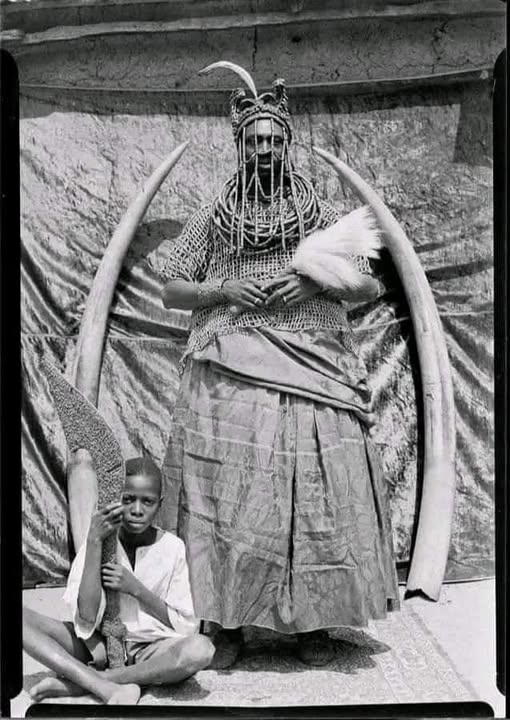Africa wasn't waiting to be "discovered". We weren’t lost, we knew our form — Empires. Trade systems. Architecture. Design with actual purpose.
We weren’t “primitive.” We were precise.
Lately, I’ve been deep-diving into African history — Songhai, Kush, Benin, Oyo, Ghana, Mali, Ethiopia — and I’m honestly annoyed. Not at them, but at how little credit we give ourselves.
We had functioning civilization before colonizers figured out how to bathe properly.
They Weren’t Chasing Vibes—They Were Solving Problems
Let’s take the Songhai Empire, for example — one of the largest and most organized empires in pre-colonial Africa.
At its peak (15th–16th century), the capital Gao and the city of Timbuktu were thriving hubs of scholarship, trade, architecture, and cultural expression.
Timbuktu’s Djinguereber Mosque, built in 1327, used local mud, wood, and palm materials — sustainable, climate-appropriate, and still standing.

That’s not just architecture — that’s Afro-brutalism before Europe coined the term.
Meanwhile, across the continent, you have Ethiopia — one of the few African nations that was never colonized.
They retained their systems, languages, religious expressions, and aesthetics.
The rock-hewn churches of Lalibela, carved directly from bedrock in the 12th century, still stand today — a masterclass in design rooted in faith, earth, and ingenuity.
Ethiopians never had their "form" rewritten. The result? A national identity that feels more intact than most.
Our drip had main character energy.

Ancient African OOTD was practical, symbolic, and expressive.
In the Benin Empire, royal dressing was a bold display. Dressing was ritual — form that carried memory, rank, and reverence.
In Ethiopia, the shamma cloth, a lightweight cotton wrap, reflected simplicity, climate-awareness, and spiritual humility — not a Pinterest impractical fashion trend.
Now jump to today…
We’re sweating through layers of denim and cargo in Lagos sun, all because one guy in Brooklyn said it’s a fit (I no go lie even me sef don do am)
I no dey try form Kwame Nkrumah

Let me be clear—I'm not here to preach pan-African revolution or decolonize your wardrobe.
But I am saying… it wouldn’t hurt to dig a little.
So What Can We Learn?
You don’t have to become a loincloth-wearing traditionalist or burn your Western wardrobe.
This isn’t a rejection — it’s a reconciliation.
Me?
I wear Kangol hats not just because they look cool, but because it aligns with how I see myself — part revolutionary, part street poet (okay wait.. make I no lie its cos of Samuel L. Jackson). But my point is it’s intentional expression.
And that’s what these empires did.
That’s what we can do.
So, What’s the Point? (Other Than Flexing Wisdom)
Use the past as a codebase
The past isn’t just history, it’s source code.
Our ancestors designed from the ground up—literally. Their buildings, clothes, and systems were shaped by where they were, who they were, and what they needed.Express your purpose
Don’t just slap Ankara on a hoodie and call it “Afrofuturism.”
Understand the function, origin, and purpose of the thing. If it can’t survive Lagos sun or speak your story, what’s the point?Protect your sense of self like it’s sacred ground—because it is.
Without it, your whole aura turns to cosplay—you forget the script, the soil, the source. It’s like performing a character with no backstory. Style becomes surface. Expression becomes imitation. And slowly, you become a stranger in your own skin.

Read to Reboot
Here’s a quick scroll of recommended books if you want to dive deeper:
The Royal Kingdoms of Ghana, Mali, and Songhay – Patricia & Fredrick McKissack
African Civilizations: An Introduction – Graham Connah
How Europe Underdeveloped Africa – Walter Rodney
Sundiata: An Epic of Old Mali – D.T. Niane
When We Ruled – Robin Walker
The Destruction of Black Civilization – Chancellor Williams
Final Transmission from the Root Server
You don’t have to copy the past to learn from it.
You don’t have to cancel the West to re-embrace your roots.
But whatever you do—make it deliberate.
Your form didn’t start with you.
It was shaped by hands, histories, and hustle you may not even remember.
Now it’s your turn to reshape it—with sense.
Now, you get to shape it back.
Build with purpose.
Dress with memory.
Code yourself, consciously. Know thy form.
Disclaimer:
All images used in this blog post are either sourced from publicly available online platforms or generated using artificial intelligence. I do not claim ownership of externally sourced images. Additionally, this blog post was edited and rewritten with the assistance of AI tools.



